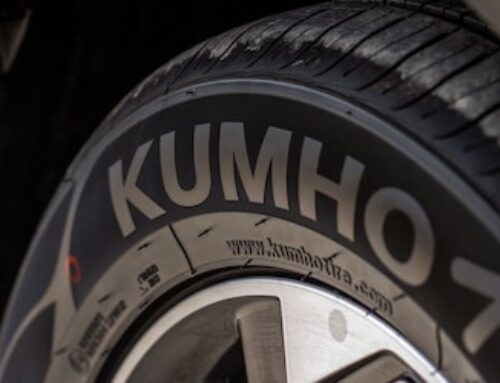Table of Contents
Just like everything else, tires age with time. They lose functionality, as all other auto parts do. In this post, we’ll look at how to determine a tire’s age, give you a few handy tips, and answer the most common questions about tires aging gracefully.

How to check a tire’s age?
Ensuring the tires are in good shape is one of the most important parts of car maintenance. Yet, it is suboptimal to merely look for wear and tear or gauge tread depth. Your safety on the road may be impacted by the condition of your tires, which is an important factor.
Locating the Tire Identification Number
Locate the Tire Identification Number (TIN), a group of characters and numbers on the tire’s sidewall, to identify your tire’s age. On the outside sidewall of the tire, the TIN is frequently located near the rim. The tire’s production week and year are identified by the last four digits of the TIN. For example, if the last four numbers are “1822”, it means that the tire was manufactured in the 18th week of 2022.
The production date, not the purchase date, determines the tire’s age, which is a crucial distinction to make. A tire will still have an age depending on the date it was manufactured, even if it has never been used and is still in its original packaging.
Why is tire age important?

Because tires lose effectiveness as they get older, tire age is a crucial consideration. The rubber may degrade and lose flexibility, resulting in decreased traction and a higher risk of blowouts. Moreover, sidewall or tread cracks can appear in tires, weakening the tire’s construction and raising the possibility of failure.
So, even if tires appear in good shape, replacing them if they are more than 10 years old is advised. In fact, regardless of the amount of tread left on the tire, many tire manufacturers advise replacing tires every six years.
Why, then, is tire age important? Tires might lose some of their efficiency over time, which reduces their dependability on the road. The rubber may deteriorate and become less flexible, decreasing traction and raising the possibility of blowouts. Moreover, sidewall or tread cracks can appear on tires, weakening the tire’s design and increasing the risk of failure.
If your tires are over 10 years old, it is advised to replace them even if they seem in good shape. Regardless of how much wear is still on the tire, many tire manufacturers recommend replacing tires every six years.
Tire age vs. tire life

It’s essential to understand the difference between tire life and tire age. Tire life is the time frame, usually six years from the date of manufacture, during which a tire can perform at its best in terms of performance and safety. Tire age, on the other hand, refers to the tire’s real age, whether or not it has been used.
Even though a tire is old and has plenty of tread left, it could still be past its prime. So even if your tires appear to be in good condition, it’s important to consider their age and replace them if necessary.
Don’t let the best tire deals & tips roll by!
Subscribe to our newsletter
How to extend the life of your tires?
Properly maintaining your tires can help them last longer while ensuring their best performance and safety. The following advice will help you get the most use out of your tires:
- Regular inspections: Check your tires frequently for any indications of wear, corrosion, or cracking. Have your tires checked by a pro if you notice any problems.
- Appropriate inflation: Uneven tire wear, poor performance, and decreased fuel efficiency can result from under or over-inflated tires. Ensure that the recommended pressure is reached for your tires.
- Tire rotation: Rotating your tires regularly can assist in maintaining even wear and increase their lifespan.
- Regular tire alignment: Another important maintenance step performed at the tire shop will prevent uneven treadwear and add to the lifespan extension of your tires.
- Avoid rough roads and sharp objects: Your tires may become damaged by rough surfaces and sharp objects, affecting their performance and safety. Avoid driving on unpaved surfaces, and be cautious of sharp edges in the road.

When not in use, preserving your tires appropriately is equally crucial. Tires should be stored in a cool, dry area away from heat sources and sunshine. Ensure your tires are clean and dry before storing them if you intend to keep them in storage for a while.
Keep your tires safe and performing optimally by determining their age
Knowing the age of your tires is essential for proper tire maintenance, optimum performance, and safety. You may make informed choices about tire replacement by understanding how to read the Tire Identification Number (TIN) and the distinction between tire age and tire life. In addition, good tire maintenance habits like routine inspections, accurate inflation, and tire rotation will help your tires last longer while ensuring their best performance and safety.
Frequently Asked Questions
Can a tire’s performance be impacted by its age?
Yes. A tire’s performance might be impacted by its age. A tire’s structural integrity and rubber compounds may deteriorate with time, resulting in reduced performance or even tire failure.
How frequently should I have my tires replaced?
Every 6 years. This is a safe timeframe regardless of how much tread is still on your tires. But, you should get your tires inspected by a professional and replaced if necessary if you observe signs of aging or wear, such as cracks in the sidewall or uneven tread wear.
What can I do to make my tires last longer?
Regular tire maintenance can help your tires last longer. Maintenance involves routine tire rotations, alignment, adequate tire pressure, and frequent checks for wear or damage. Moreover, avoiding tough terrain, pointy objects, and extreme heat will also help your tires last longer.









